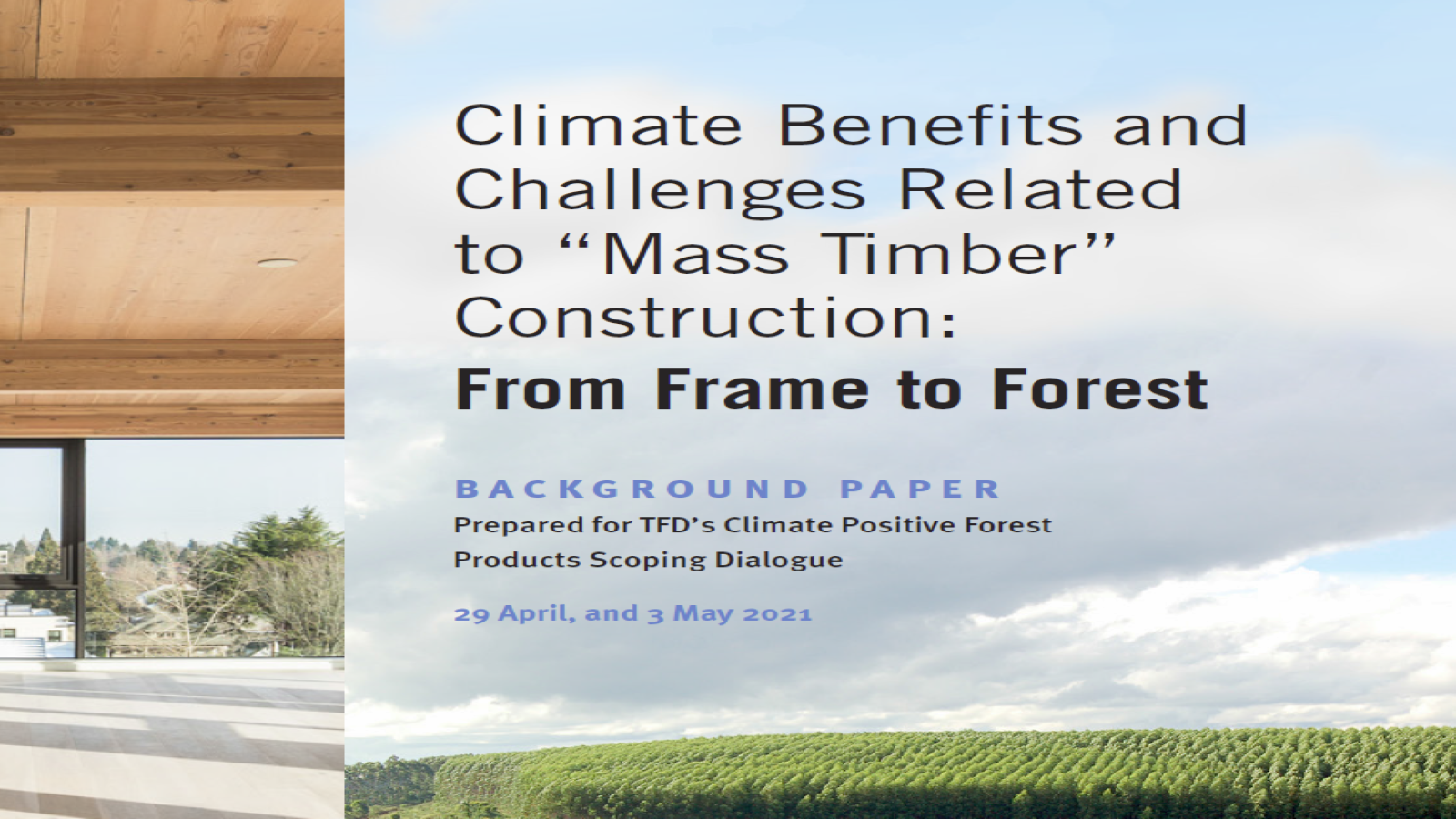TFD Launches Background Paper on Climate Positive Forest Products
TFD Launches Background Paper on Climate Positive Forest Products

Mass timber as a building material has garnered considerable attention in recent years and is being touted as a potential improvement for ease of construction and pre-fabrication as well as carbon reductions when compared to conventional building materials. The market is expected to grow in value by 13-16% per year through at least 2024, with the largest increases in new capacity in North America. The market is still in its infancy and there is a potential for growth globally, especially where there is an overlap of population and high-density building need, forest resources, and basic infrastructure for ease of transport.
As interest and attention around mass timber grows, stakeholders from a range of sectors are beginning to ask questions that explore the implications of an increasing market for mass timber building materials. Drawing on extensive experience bringing stakeholders together around complex issues related to forests and climate, TFD launched the Climate Positive Forest Products (CPFP) initiative in 2020 and began looking into key questions about what an increase in the utilization and demand for mass timber might mean for forests, climate, and people. This report was developed to provide a baseline of information on the current state of knowledge related to mass timber construction practices for participants of TFD’s Scoping Dialogue on Climate Positive Forest Products, convened virtually on April 26th, 29th, and May 3rd in 2021.
This report synthesizes existing literature, outlining where the best available research aligns and where there is disagreement, under four major topic areas: (i) the current state of mass timber manufacturing and construction globally, (ii) state of knowledge regarding the climate impacts of substituting mass timber for conventional building materials and of storing carbon in mass timber materials, (iii) the state of knowledge of potential end-of-life climate impacts of mass timber utilization, and (iv) potential impacts on forest carbon stock and forest condition of increased demand for wood products from forest harvesting or displacement of wood from other industries. Additionally, a series of informal stakeholder interviews were conducted at the direction of the advisory group to generate a general understanding of where stakeholders agree and disagree on issues related to the potential for mass timber construction to act as a climate solution.
